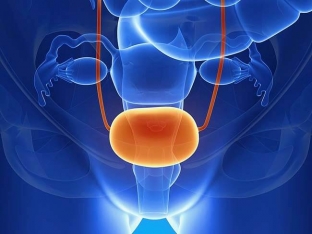In the arsenal of modern aesthetic medicine today there is a huge number of effective procedures, among which the most popular and in demand is the botulinum therapy procedure. Botox® injections most people associate with cosmetology, as this drug is very famous for its amazing effect on the elimination of mimic wrinkles. But not everyone knows that not only in this field of medicine, the use of Botox & reg; solves serious problems.
 In today's article on estet-portal.com, read about the features of the use of Botox injections ® in urology. How with the help of this drug you can eliminate the most delicate urological problems – tells the candidate of medical sciences, urologist of the highest category Dmitry Mikhailov.
In today's article on estet-portal.com, read about the features of the use of Botox injections ® in urology. How with the help of this drug you can eliminate the most delicate urological problems – tells the candidate of medical sciences, urologist of the highest category Dmitry Mikhailov.
Features of the use of Botox injections® in urological practice
Botox® from the company "Allergan" really widely used in urological practice.
By injecting Botox® bladder dysfunction can be treated.
Botox Injections® indicated for idiopathic overactive bladder with symptoms of urinary incontinence, urinary urgency, or increased urinary frequency in adults who do not respond well to or cannot tolerate anticholinergic drugs. Botox® also effective for urinary incontinence in adult patients with neurogenic detrusor overactivity resulting from neurogenic bladder resulting from persistent cervical cord injury or multiple sclerosis.
Botox Injections®:
- Botox injections® for the treatment of idiopathic overactive bladder;
- Botox injections® for the treatment of urinary incontinence due to neurogenic detrusor overactivity;
- Botox injections® for the treatment of bladder diseases: results of the procedure.
Botox Injections® for the treatment of idiopathic overactive bladder
Botox Injections® may be used to treat idiopathic overactive bladder. The recommended dose of the drug in this case is 100 Allergan units of Botox®, 0.5 ml injection into 20 detrusor sites. The reconstituted drug is injected into the detrusor muscle using a flexible or rigid cystoscope, avoiding the triangle and bladder fundus. Previously, the bladder is filled with a sufficient amount of saline, which is necessary for good visualization of the treated area. Perform 20 injections of Botox®. 0.5 ml, at a distance of about 1 cm from each other, while the needle must be inserted about 2 mm into the detrusor. For the last injection, approximately 1 ml of sterile sodium chloride solution must be injected to ensure the full dosage. It is important to note, that after injections, saline should not be drained from the bladder until patients are able to void. Within at least 30 minutes after Botox® injections it is necessary to observe the patient.

Botox Injections® for the treatment of urinary incontinence due to neurogenic detrusor overactivity
Botox Injections® are an effective treatment for urinary incontinence due to neurogenic detrusor overactivity. The recommended dose is 200 Allergan units of Botox®, which must be administered in parallel to 30 detrusor sites. The reconstituted drug must also be injected into the detrusor muscle using a flexible or rigid cystoscope, avoiding the triangular area and bladder fundus. The bladder must first be filled with saline for sufficient visualization. The injection needle is inserted 2 mm into the detrusor, 30 injections are performed, each 1 ml, at a distance of approximately 1 cm from each other. For the last injection, 1 ml of sterile sodium chloride solution is also injected for the full dosage.
Botox Injections® for the treatment of bladder diseases: results of the procedureImprovement in a patient with idiopathic overactive bladder occurs within two weeks after Botox® injections. As clinical studies show, the duration of the effect is on average 166 days. With urinary incontinence due to neurogenic detrusor overactivity, the patient's condition also improves after 2 weeks. If the clinical effect decreases – the patient can be re-treated, but Botox® into the bladder again can be no earlier than 3 months after the preliminary injection.
Botox Injections® – it is an effective and safe method of correcting delicate problems such as urological pathologies.However, it should be noted that for urinary tract infections, acute urinary retention and the presence of bladder stones at the time of treatment, Botox® should be administered; into the bladder is contraindicated. Knowledge of all the features of the use of the drug Botox®; in the treatment of bladder pathologies will help to make the procedure as safe and effective as possible for the patient. estet-portal.com thanks you for your attention.
Author of the article: PhD, urologist of the highest category Dmitry Mikhailov.







Add a comment